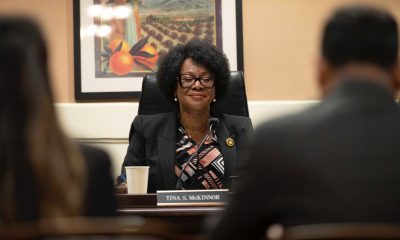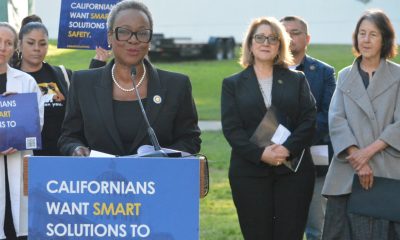Bay Area
What California Is Learning from Expanding Voters Rights
Mail-in ballot voting has been underway since the second week in May. Assembly Bill 37, signed into law by Gov. Gavin Newsom in 2021, requires the state to send vote-by-mail (VBM) ballots to every registered voter in the state. The law applies to all elections held after Jan. 1, 2022.
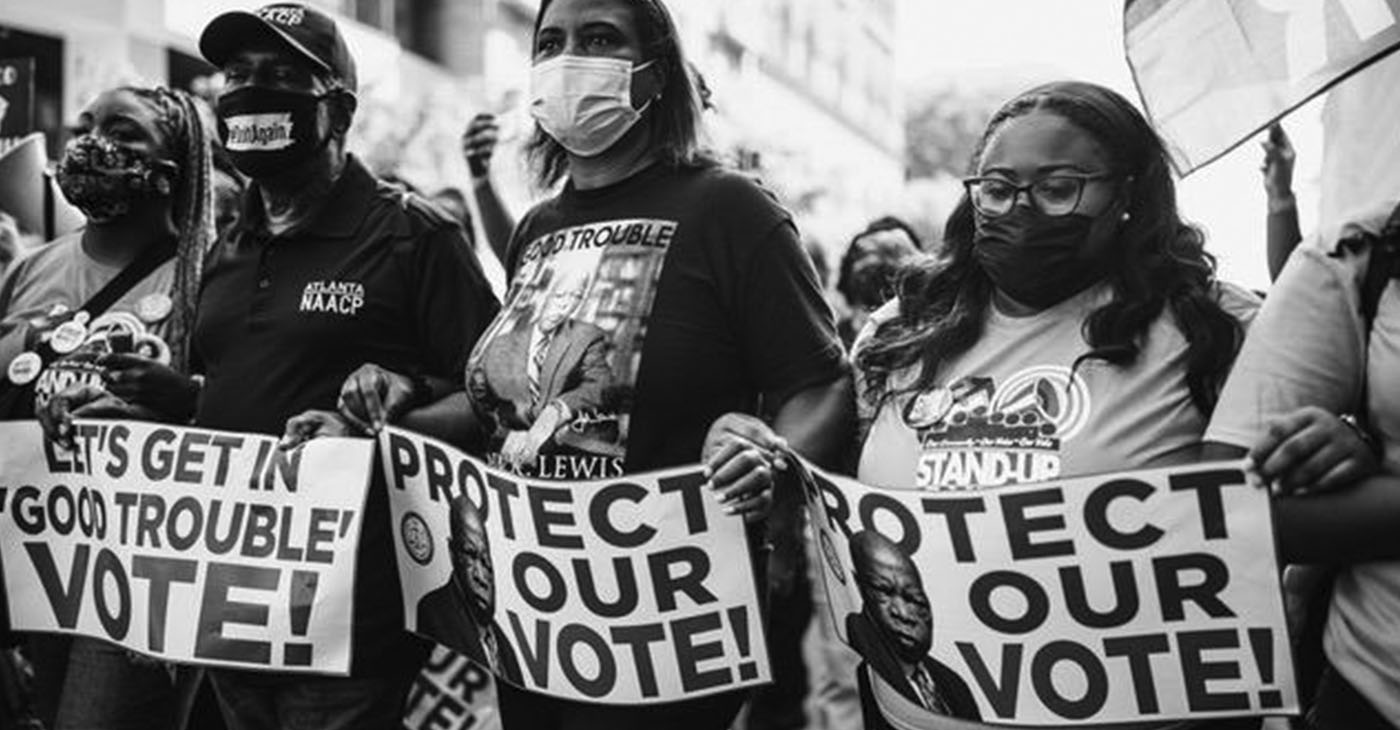
By Joe W. Bowers Jr., California Black Media
June 7, 2022 is Primary Election Day in California.
On the ballot are candidates for U.S. Senate, Governor, Lieutenant Governor, Secretary of State, Controller, Treasurer, Attorney General, Insurance Commissioner, State Board of Equalization, State Superintendent of Public Instruction, U.S. House of Representatives, State Senate and State Assembly, as well as candidates for local elected positions.
There are two contests for U.S. Senate on the ballot. One is for a full six-year term ending Jan. 3, 2029. The other is for the remainder of the term that Sen. Alex Padilla (D-CA) has been serving in place of Vice. President Kamala Harris that ends Jan. 3, 2023.
Mail-in ballot voting has been underway since the second week in May. Assembly Bill 37, signed into law by Gov. Gavin Newsom in 2021, requires the state to send vote-by-mail (VBM) ballots to every registered voter in the state. The law applies to all elections held after Jan. 1, 2022.
Ballots are sent 29 days before the election, which was May 9 for the primary. For the November General Election, voters will start receiving ballots October 10.
A majority of California voters live in counties that have adopted the Voter’s Choice Act (VCA) system. In 2016, Senate Bill 450 created the VCA, an election model that expands voters’ options for how, when and where they can cast their ballots in an attempt to provide more accessible voting options.
VBM ballots are provided with a postage-paid return envelope. For a ballot to count in the upcoming primary election, it must be postmarked on or before Election Day and received by June 14, 2022. It can also be dropped off in-person to a secure ballot drop box, a voting location or county elections office by 8:00 p.m. on June 7, 2022.
The VCA is an optional law. Counties elect if they want to adopt it. In 2018, five counties adopted the new law: Madera, Napa, Nevada, Sacramento and San Mateo. In 2020, nine additional counties changed their election models to the VCA: Amador, Butte, Calaveras, El Dorado, Fresno, Los Angeles, Mariposa, Orange, Santa Clara, and Tuolumne. In 2022, the number of counties that have transitioned to the VCA grew to 28 with the addition of Alameda, Kings, Marin, Merced, Riverside, San Benito, San Diego, Santa Cruz, Sonoma, Stanislaus, Ventura, and Yolo counties.
In VCA counties, early in-person voting begins as early as May 28. Voters can vote at any county vote center instead of being assigned to a neighborhood polling place. The vote centers are open four to 10 days prior to the election, including weekends. They serve as one-stop shops with accessible voting machines – venues where voters can drop off their VBM ballot, receive a replacement ballot, register to vote, and get help with voting material in multiple languages.
Unregistered voters who miss the close of registration on May 23 will be able to conditionally register to vote at any vote center and cast a provisional ballot through the end of Election Day.
When California policymakers and election officials proposed the Voter’s Choice Act most proponents applauded its benefits, including lowering election administration costs, providing greater convenience and flexibility for voters, and the potential to improve voter turnout.
Recently, California Secretary of State (SOS) Shirley Weber released a report on the implementation of VCA during the 2020 Primary and General Elections.
Key findings of the report include:
VCA counties had higher voter registration rates in the state. The 15 VCA counties accounted for about half of the state’s registered voters in both elections.
Many VCA counties experienced a higher voter turnout compared to their non-VCA counterparts. Turnout in the 2020 General Election across racial groups showed white voters had a higher overall turnout than their non-W\white counterparts. The voter turnout gap for Black voters was 5.2 points, and AAPI voters had a turnout gap of 4.3 points.
Black and AAPI voters turned out at similar rates as the VCA counties’ average, and Latino voters used in-person voting most among all races and ethnicities.
Use of vote-by-mail ballots was the primary choice of voting in the 2020 elections. More voters chose to return their ballot by drop box than by mail. Use of drop boxes decreased after the age of 45 in the Primary Election and age 35 in the General Election.
Voters in VCA counties cast a ballot in-person at a higher rate than voters in non-VCA counties in the General Election (55.1%). For the Primary Election, that number was 46.6%.
In the General Election, voters aged 46-55 voted in person most compared to all other age groups. In both the Primary and General Elections, voters aged 66+ voted in-person least.
VBM ballot rejection rates in VCA counties were similar to VBM ballot rejections statewide. Voters aged 18-25 had the highest ballot rejection rate. Ballot rejection rates decreased as voter age increased in VCA counties.
VBM ballots were rejected (69.3%) mainly due to not being received on time during the Primary Election. But General Election VBM ballots were mainly rejected due to non-matching signatures (56.09%).
Provisional ballot use decreased significantly between the Primary and General Elections.
There were no confirmed instances of voter fraud in both the Primary and General elections in 2020.
Secretary of State’s Recommendations based on the report findings:
Share best practices from counties that have high voter registration rates with counties that have lower registration rates.
Reduce ballot rejection rates through increased voter education.
Continue to work with counties to ensure drop box locations are accessible and convenient to the public.
Increase outreach and education about early in-person voting and other voting options available in VCA counties.
Increase targeted outreach efforts to engage young voters (18-25).
“We have taken away every excuse a person can possibly have as to why they won’t vote,” SOS Weber said recently. “People realize this is going to be easy and it’s comfortable.”
Alameda County
DA Pamela Price Stands by Mom Who Lost Son to Gun Violence in Oakland
Last week, The Post published a photo showing Alameda County District Attorney Pamela Price with Carol Jones, whose son, Patrick DeMarco Scott, was gunned down by an unknown assailant in 2018.
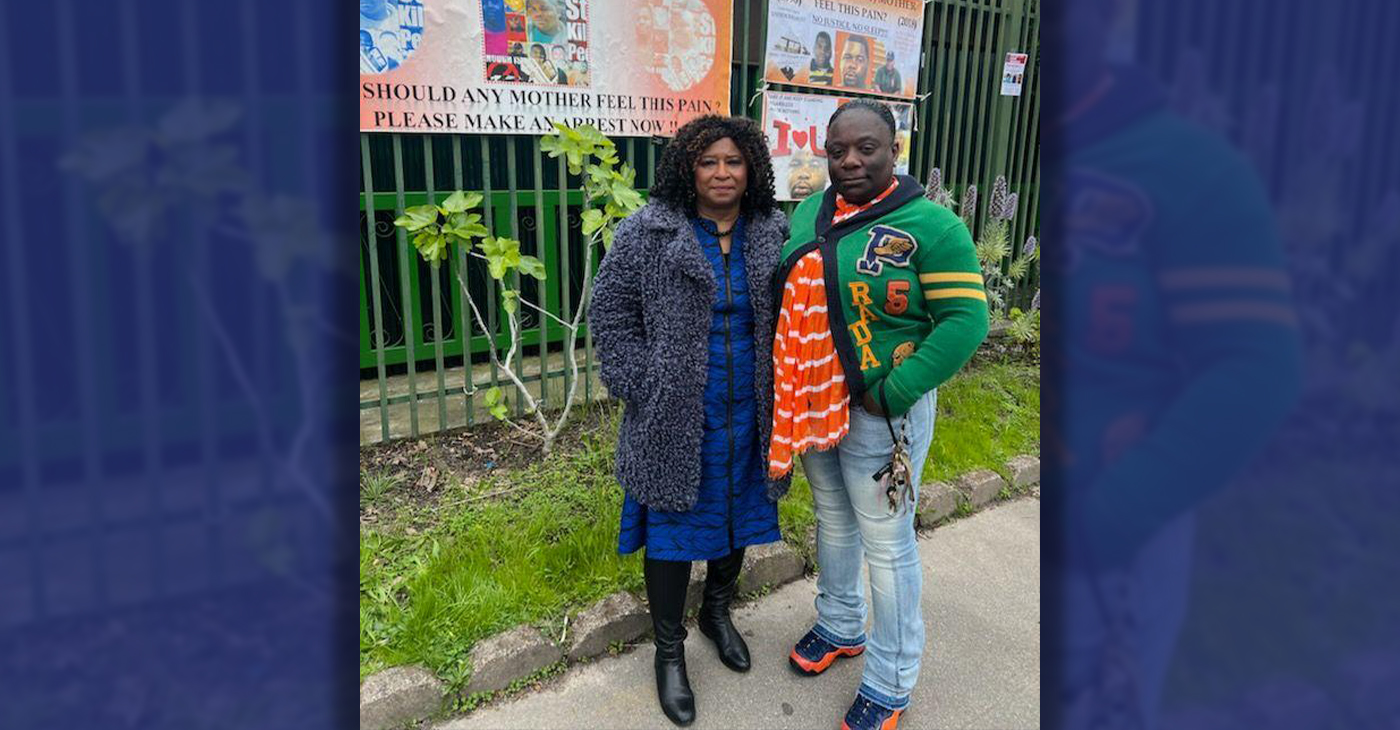
Publisher’s note: Last week, The Post published a photo showing Alameda County District Attorney Pamela Price with Carol Jones, whose son, Patrick DeMarco Scott, was gunned down by an unknown assailant in 2018. The photo was too small for readers to see where the women were and what they were doing. Here we show Price and Jones as they complete a walk in memory of Scott. For more information and to contribute, please contact Carol Jones at 510-978-5517 at morefoundation.help@gmail.com. Courtesy photo.
Bay Area
State Controller Malia Cohen Keynote Speaker at S.F. Wealth Conference
California State Controller Malia Cohen delivered the keynote speech to over 50 business women at the Black Wealth Brunch held on March 28 at the War Memorial and Performing Arts Center at 301 Van Ness Ave. in San Francisco. The Enterprising Women Networking SF Chapter of the American Business Women’s Association (ABWA) hosted the Green Room event to launch its platform designed to close the racial wealth gap in Black and Brown communities.
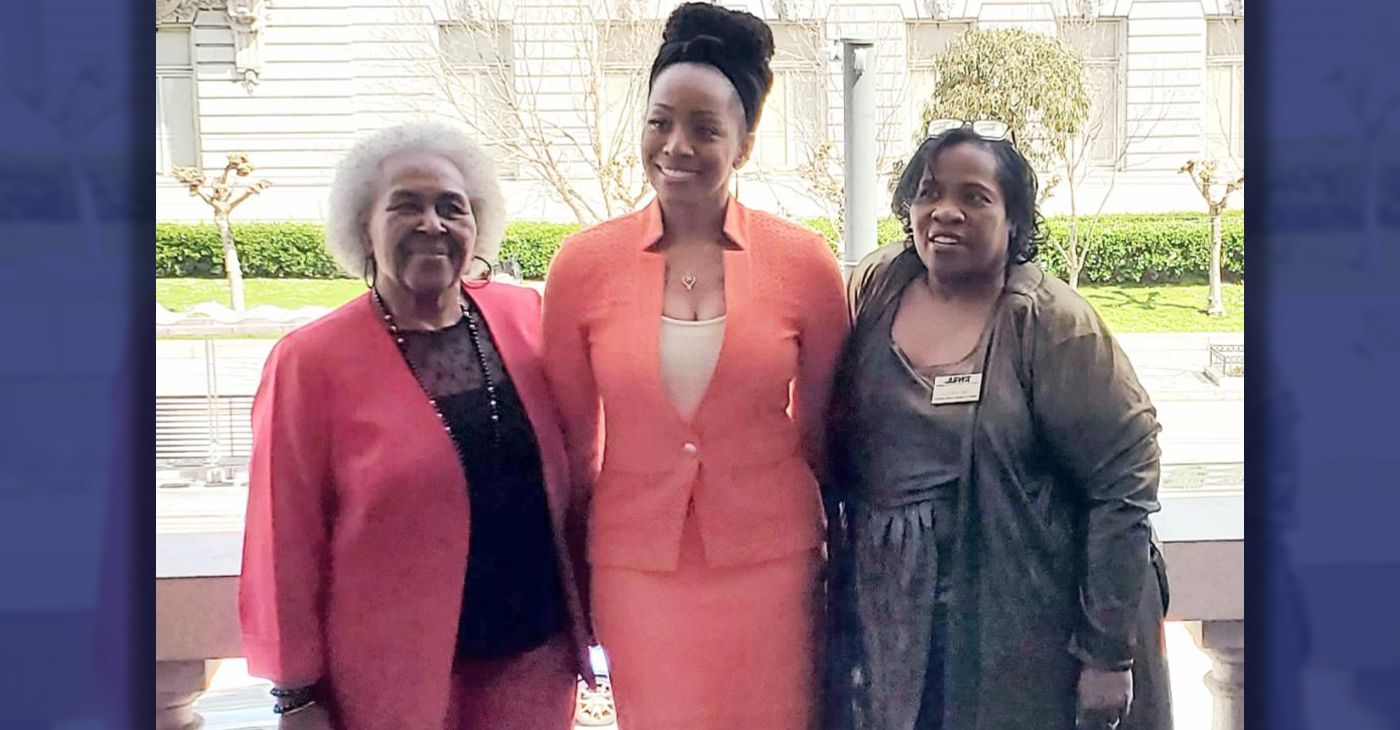
By Carla Thomas
California State Controller Malia Cohen delivered the keynote speech to over 50 business women at the Black Wealth Brunch held on March 28 at the War Memorial and Performing Arts Center at 301 Van Ness Ave. in San Francisco.
The Enterprising Women Networking SF Chapter of the American Business Women’s Association (ABWA) hosted the Green Room event to launch its platform designed to close the racial wealth gap in Black and Brown communities.
“Our goal is to educate Black and Brown families in the masses about financial wellness, wealth building, and how to protect and preserve wealth,” said ABWA San Francisco Chapter President LaRonda Smith.
ABWA’s mission is to bring together businesswomen of diverse occupations and provide opportunities for them to help themselves and others grow personally and professionally through leadership, education, networking support, and national recognition.
“This day is about recognizing influential women, hearing from an accomplished woman as our keynote speaker and allowing women to come together as powerful people,” said ABWA SF Chapter Vice President Velma Landers.
More than 60 attendees dined on the culinary delights of Chef Sharon Lee of The Spot catering, which included a full soul food brunch of skewered shrimp, chicken, blackened salmon, and mac and cheese.
Cohen discussed the many economic disparities women and people of color face. From pay equity to financial literacy, Cohen shared not only statistics, but was excited about a new solution in motion which entailed partnering with Californians for Financial Education.
“I want everyone to reach their full potential,” she said. “Just a few weeks ago in Sacramento, I partnered with an organization, Californians for Financial Education.
“We gathered 990 signatures and submitted it to the [California] Secretary of State to get an initiative on the ballot that guarantees personal finance courses for every public school kid in the state of California.
“Every California student deserves an equal opportunity to learn about filing taxes, interest rates, budgets, and understanding the impact of credit scores. The way we begin to do that is to teach it,” Cohen said.
By equipping students with information, Cohen hopes to close the financial wealth gap, and give everyone an opportunity to reach their full financial potential. “They have to first be equipped with the information and education is the key. Then all we need are opportunities to step into spaces and places of power.”
Cohen went on to share that in her own upbringing, she was not guided on financial principles that could jump start her finances. “Communities of color don’t have the same information and I don’t know about you, but I did not grow up listening to my parents discussing their assets, their investments, and diversifying their portfolio. This is the kind of nomenclature and language we are trying to introduce to our future generations so we can pivot from a life of poverty so we can pivot away and never return to poverty.”
Cohen urged audience members to pass the initiative on the November 2024 ballot.
“When we come together as women, uplift women, and support women, we all win. By networking and learning together, we can continue to build generational wealth,” said Landers. “Passing a powerful initiative will ensure the next generation of California students will be empowered to make more informed financial decisions, decisions that will last them a lifetime.”
Bay Area
MAYOR BREED ANNOUNCES $53 MILLION FEDERAL GRANT FOR SAN FRANCISCO’S HOMELESS PROGRAMS
San Francisco, CA – Mayor London N. Breed today announced that the U.S. Department of Housing and Urban Development (HUD) has awarded the city a $53.7 million grant to support efforts to renew and expand critical services and housing for people experiencing homelessness in San Francisco.
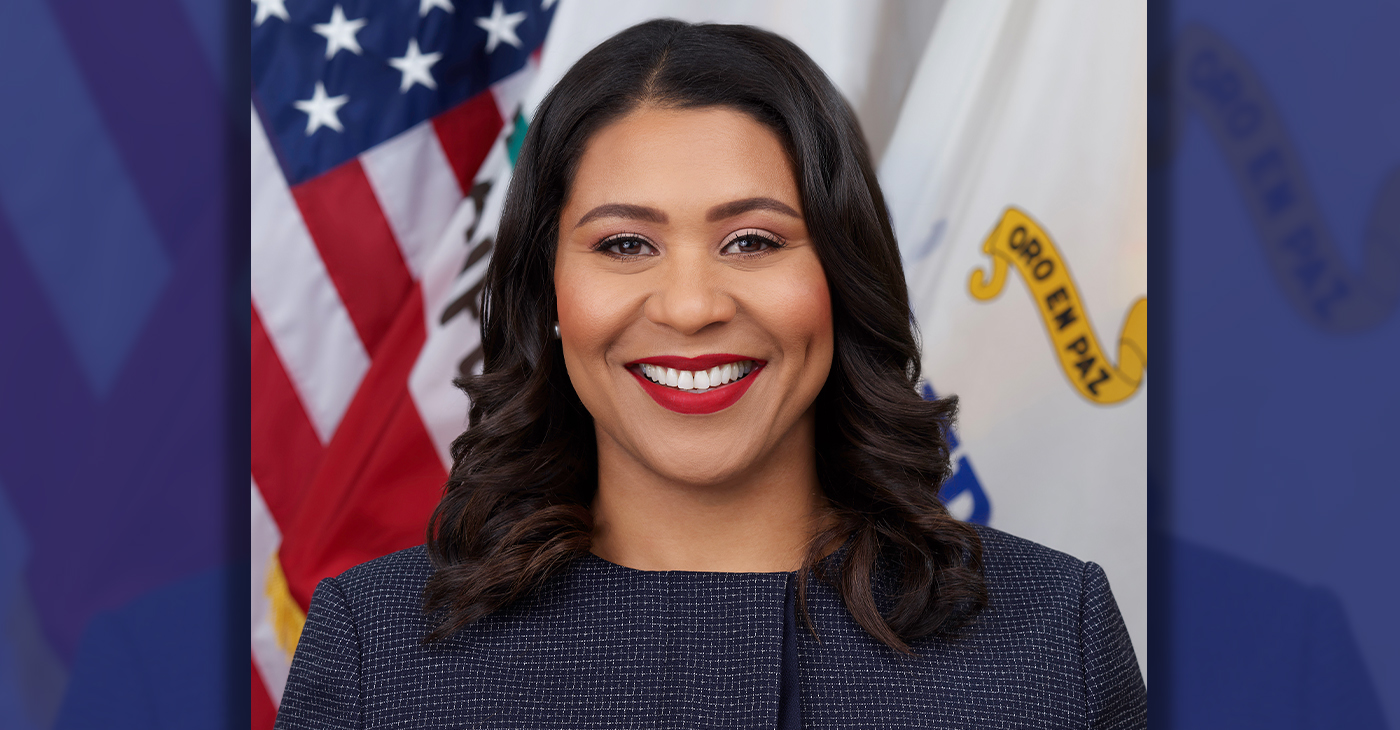
FOR IMMEDIATE RELEASE:
Wednesday, January 31, 2024
Contact: Mayor’s Office of Communications, mayorspressoffice@sfgov.org
***PRESS RELEASE***
MAYOR BREED ANNOUNCES $53 MILLION FEDERAL GRANT FOR SAN FRANCISCO’S HOMELESS PROGRAMS
HUD’s Continuum of Care grant will support the City’s range of critical services and programs, including permanent supportive housing, rapid re-housing, and improved access to housing for survivors of domestic violence
San Francisco, CA – Mayor London N. Breed today announced that the U.S. Department of Housing and Urban Development (HUD) has awarded the city a $53.7 million grant to support efforts to renew and expand critical services and housing for people experiencing homelessness in San Francisco.
HUD’s Continuum of Care (CoC) program is designed to support local programs with the goal of ending homelessness for individuals, families, and Transitional Age Youth.
This funding supports the city’s ongoing efforts that have helped more than 15,000 people exit homelessness since 2018 through City programs including direct housing placements and relocation assistance. During that time San Francisco has also increased housing slots by 50%. San Francisco has the most permanent supportive housing of any county in the Bay Area, and the second most slots per capita than any city in the country.
“In San Francisco, we have worked aggressively to increase housing, shelter, and services for people experiencing homelessness, and we are building on these efforts every day,” said Mayor London Breed. “Every day our encampment outreach workers are going out to bring people indoors and our City workers are connecting people to housing and shelter. This support from the federal government is critical and will allow us to serve people in need and address encampments in our neighborhoods.”
The funding towards supporting the renewal projects in San Francisco include financial support for a mix of permanent supportive housing, rapid re-housing, and transitional housing projects. In addition, the CoC award will support Coordinated Entry projects to centralize the City’s various efforts to address homelessness. This includes $2.1 million in funding for the Coordinated Entry system to improve access to housing for youth and survivors of domestic violence.
“This is a good day for San Francisco,” said Shireen McSpadden, executive director of the Department of Homelessness and Supportive Housing. “HUD’s Continuum of Care funding provides vital resources to a diversity of programs and projects that have helped people to stabilize in our community. This funding is a testament to our work and the work of our nonprofit partners.”
The 2024 Continuum of Care Renewal Awards Include:
- $42.2 million for 29 renewal PSH projects that serve chronically homeless, veterans, and youth
- $318,000 for one new PSH project, which will provide 98 affordable homes for low-income seniors in the Richmond District
- $445,00 for one Transitional Housing (TH) project serving youth
- $6.4 million dedicated to four Rapid Rehousing (RRH) projects that serve families, youth, and survivors of domestic violence
- $750,00 for two Homeless Management Information System (HMIS) projects
- $2.1 million for three Coordinated Entry projects that serve families, youth, chronically homeless, and survivors of domestic violence
In addition, the 2023 CoC Planning Grant, now increased to $1,500,000 from $1,250,000, was also approved. Planning grants are submitted non-competitively and may be used to carry out the duties of operating a CoC, such as system evaluation and planning, monitoring, project and system performance improvement, providing trainings, partner collaborations, and conducting the PIT Count.
“We are very appreciative of HUD’s support in fulfilling our funding request for these critically important projects for San Francisco that help so many people trying to exit homelessness,” said Del Seymour, co-chair of the Local Homeless Coordinating Board. “This funding will make a real difference to people seeking services and support in their journey out of homelessness.”
In comparison to last year’s competition, this represents a $770,000 increase in funding, due to a new PSH project that was funded, an increase in some unit type Fair Market Rents (FMRs) and the larger CoC Planning Grant. In a year where more projects had to compete nationally against other communities, this represents a significant increase.
Nationally, HUD awarded nearly $3.16 billion for over 7,000 local homeless housing and service programs including new projects and renewals across the United States.
-

 Activism4 weeks ago
Activism4 weeks agoOakland Post: Week of March 27 – April 2, 2024
-

 #NNPA BlackPress4 weeks ago
#NNPA BlackPress4 weeks agoCOMMENTARY: D.C. Crime Bill Fails to Address Root Causes of Violence and Incarceration
-

 #NNPA BlackPress4 weeks ago
#NNPA BlackPress4 weeks agoMayor, City Council President React to May 31 Closing of Birmingham-Southern College
-

 #NNPA BlackPress4 weeks ago
#NNPA BlackPress4 weeks agoBeloved Actor and Activist Louis Cameron Gossett Jr. Dies at 87
-

 Community1 week ago
Community1 week agoFinancial Assistance Bill for Descendants of Enslaved Persons to Help Them Purchase, Own, or Maintain a Home
-

 Activism3 weeks ago
Activism3 weeks agoOakland Post: Week of April 3 – 6, 2024
-

 Business1 week ago
Business1 week agoV.P. Kamala Harris: Americans With Criminal Records Will Soon Be Eligible for SBA Loans
-

 Activism2 weeks ago
Activism2 weeks agoOakland Post: Week of April 10 – 16, 2024

